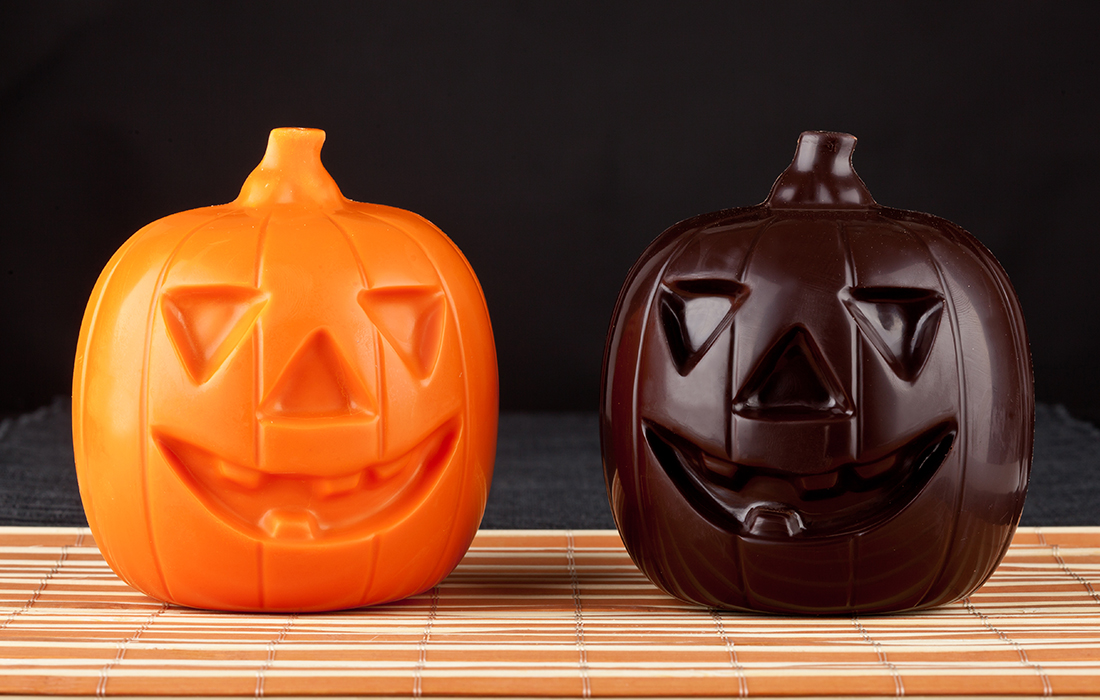Dark chocolate: subtle trick or ideal treat?

Halloween is fraught with the perils of cavity-inducing candies and tempting treats. Lip-smacking sour gummies, ooey gooey caramel and the lingering indulgence of hard candies and fruit chews can get to the best of us, but these sugar-laden delights wreak havoc on our oral health. Even after candy is swallowed, the traces of sugar coupled with bacteria in the mouth create enamel-eroding acid. Yet there is a glimmer of semi-good news for the cavity conscious: dark chocolate.
Dark chocolate — which contains at least 60 percent cocoa solids and little-to-no added sugar — offers a bevy of health benefits when consumed in moderation. As rich in flavor as it is in flavonoids, which act as antioxidants, dark chocolate is associated with improvement in mood, cognitive performance, and blood flow to the heart and arteries. Conversely, it has been shown to have the potential to reduce blood pressure, cholesterol and the risk of blood clots.
It also contains theobromine, a naturally-occurring compound that studies have shown may strengthen tooth enamel. But does this mean that we should make a beeline for dark chocolate in the interest of stronger pearly whites?
“I think the potential oral health benefit is really minimal,” says Dr. Carolyn Wilson, ’77, ’81, a retired professor in pediatric dentistry, now in full-time private practice. “If you think you’re going to eat dark chocolate and be doing your teeth good I don’t think that’s true. If you’re going to eat candy, chocolate would be the best option. But I wouldn’t eat dark chocolate to try to make my teeth stronger.”
Plus, she adds, kids don’t readily spring for the somewhat-sweet, slightly-bitter treat. They gravitate instead toward the milk chocolate variety, which lacks health benefits but is not as damaging to the teeth as other Halloween candy out there.
“Chocolate is probably the best option because it melts quickly and doesn’t stick to the teeth like caramels, Jolly Ranchers and Skittles,” Wilson says. “Chocolate dissolves and clears out of the mouth pretty quickly. Anything sticky is going to be much worse.”
That includes dark or milk chocolate brimming with nougat, caramel or ganache. Fillings cancel out potential benefits.
“Solid chocolate is better than chocolate with anything inside of it,” says Wilson. “Then it’s all downhill from there.”
To minimize the eroding effects of sugar, Wilson recommends that parents let their kids have candy as a dessert right after mealtime as opposed to snacking on it intermittently throughout the evening. The quicker they can brush or at least rinse with water, the better.
While Wilson often opts to pass out crayons to her trick-or-treaters, she readily shares the name of a favorite candy bar of her own, and it’s not the solid chocolate variety.
“I do buy Halloween candy, and I do eat it,” Wilson says. “Everybody deserves a treat now and then. You can have a treat; just practice good oral hygiene afterward.”